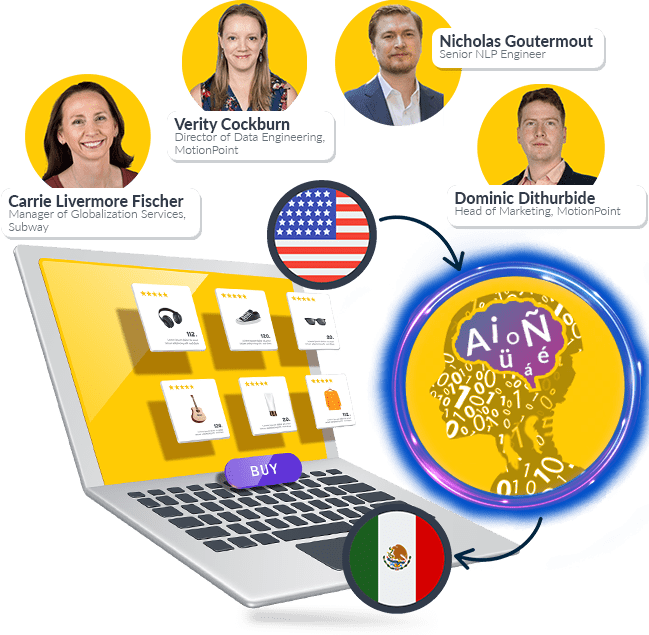In most languages there are more characters per sentence compared to the English language. For instance, English to Spanish produces 20% word expansion, English to German sees 18%, and English to Italian is 17%.
This may not impact translation quality, speed, or cost, but it can disrupt site functionality and design. Learn about how word growth impacts the layout and visual aspects of a multilingual site and how to avoid the negative effects.
What is Word Growth?
Some languages need more—or fewer—words than others to convey the same message. This is called word growth or word expansion, and it’s extremely common in translation.
You may not be aware of the site-wide disruptions that can occur when website content is localized for different markets. Will the text that is perfectly suited to display on one market's website still look aesthetically pleasing in another?
The biggest pitfall of word growth is content misalignment from spillage. This is essentially when text spills out of a confined space, like a table, button, or image. This comes across as sloppy and unprofessional, and your website performance will suffer as a result.
Let’s dive deeper into the impact of word growth.
Effects of Word Growth
Your origin website's design and template are likely optimized for your English content. If you don't account for word growth during website translation, your translated sites will suffer misalignments, broken templates, and credibility loss.
Here are some more ways your business will feel the effects of word growth:
Higher Costs and Time Consumption
Text expansion means more extensive editing and localization efforts to fit the translated content into the existing design while maintaining usability and readability. This can increase the cost and time required for website translation projects, as it may involve redesigning layouts or creating language-specific versions of the site.
Navigation and Usability Issues
Longer words and sentences can lead to navigation difficulties, especially in menus, buttons, and other interactive elements. This can impair the user experience, making it harder for users to find the information they need or complete actions on the site.
Mobile Optimization Challenges
With the growing importance of mobile browsing, word growth can complicate mobile optimization. Longer texts may require more scrolling or lead to formatting issues on smaller screens, detracting from the mobile user experience.
Cultural Nuances and Misinterpretations
Beyond the literal expansion of text, the need to adapt cultural references, idioms, and nuances can also contribute to word growth. This requires careful consideration to ensure that the translated content resonates with the target audience without causing confusion or offense.
How to Solve for Word Growth
Good website translation services will provide a multilingual site that offers a consistent brand message and accurate translations. But GREAT translation providers account for the user experience and website functionality. They consider website design and the effects of localization.
Here’s how they sidestep issues associated with word growth:
Dynamic Content Localization
Dynamic content, like images, videos, embedded applications, and forms, often contain text that automated translation tools can't detect. This means that content will either not be translated or, if it is, the text won't be adjusted within the design. Be sure this content is adjusted to accommodate word expansion.
Web Template Adjustment
You may need to be flexible with your web template design. This includes elements like headers, navigation bars, CTA buttons, graphics, brand elements, search functions, and more. If you aren't, word growth can result in a sloppy look, resulting in poor UX and negative brand credibility.
Human Intervention
Machine translation offers speed, cost effectiveness, and consistency. However, combining machine translation with human post-editing is the best way to ensure your website won't suffer from word growth issues. Human linguists can use special visual tools to adjust translation on the fly, preserving the look and feel of your website.
Ensure Your Website’s Quality
Unaddressed word growth on your website impacts the user experience and tarnishes your brand's reputation. You worked hard to ensure your origin website functions properly and looks good to your audience.
Let a professional website translation service handle the effects of word growth when localizing.
最后更新日期:2024年3月04日

